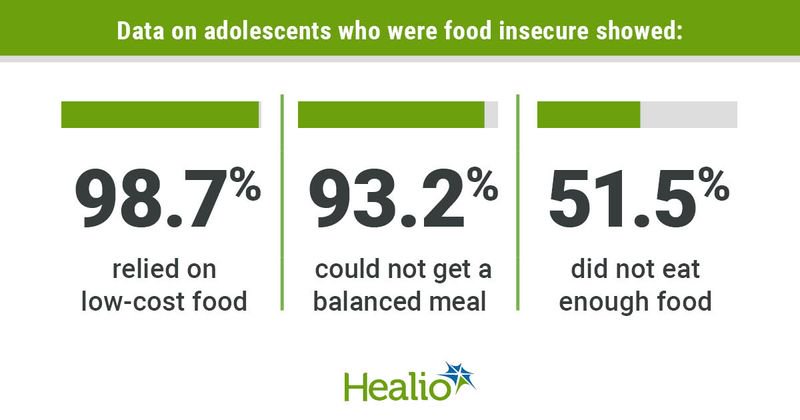Food insecurity, low household income raises risk for MASLD in adolescents
Key takeaways:
- Nearly 19% of adolescents classified as food insecure had metabolic dysfunction-associated steatotic liver disease.
- Food insecurity was more common in girls and adolescents aged 15 to 18 years.
BOSTON — Food insecurity in adolescents is “very tightly associated” with metabolic dysfunction-associated steatotic liver disease, which may result from not being able to eat or purchase a balanced meal, according to a researcher.
“Food insecurity among children is about 10.2% in the United States, and it may be a risk factor for MASLD among adults,” Zobair M. Younossi, MD, chairman of the Global NASH Council in Washington, said during The Liver Meeting media briefing. “But the data in children and adolescents is really missing right now.”

To determine the correlation between MASLD, formerly nonalcoholic fatty liver disease, and food insecurity in U.S. adolescents, Younossi and colleagues assessed demographic, nutrition, physical activity and food insecurity data from 711 children aged 12 to 18 years in the National Health and Nutrition Examination Survey from 2017 to 2018.
Researchers also used the U.S. Department of Agriculture Child Food Security Survey Module, which included eight questions about food insecurity, and determined that adolescents were considered food insecure if they had at least two affirmative responses.
Additionally, they analyzed participation in the Supplemental Nutrition Assistance Program (SNAP), as well as household income level, defining low income as less than 138% of the federal poverty level.
According to Younossi, nearly 19% of adolescents who were classified as food insecure had MASLD.
“MASLD adolescents were more likely to live in a food insecure household that had low income and that the head of the household had a lower education level, less than high school,” he said. “Obviously MASLD patients have more metabolic diseases, are more obese and more have type 2 diabetes.”
Of the adolescents who were food insecure, 98.7% relied on low-cost food, 93.2% could not get a balanced meal and 51.5% did not eat enough food, data showed. Further, food insecure adolescents had higher rates of advanced liver disease compared with those less concerned about access to food (2.8% vs. 0.3%). However, Younossi noted there were no differences in metabolic diseases based on food insecurity.
“Food insecurity was more common in girls and also in those between the ages of 15 to 18 years,” he added. “This is important because this is when adulthood starts.”
After adjusting for age, sex and race, food insecurity and low household income correlated with a greater risk for MASLD, and when including demographics or metabolic syndrome as confounders, “food insecurity remains very tightly associated with MASLD,” Younossi said.
“The association of food insecurity with MASLD is probably more likely the result of not being able to eat well or have a balanced meal [or] purchase a good meal, resulting in purchasing low-cost food,” he concluded. “Together, these factors may lead to a cycle of overeating, along with overconsumption of ultra-processed foods and sugar-sweetened foods and beverages that really promote this important liver disease.”

